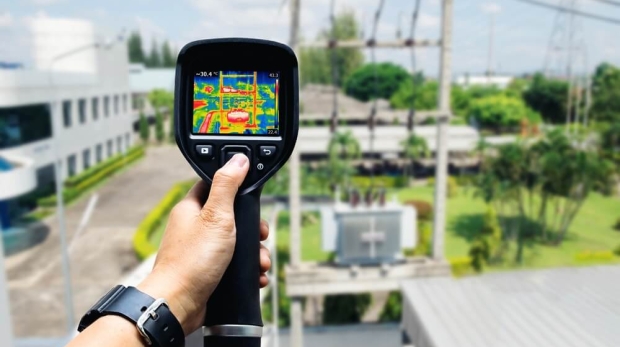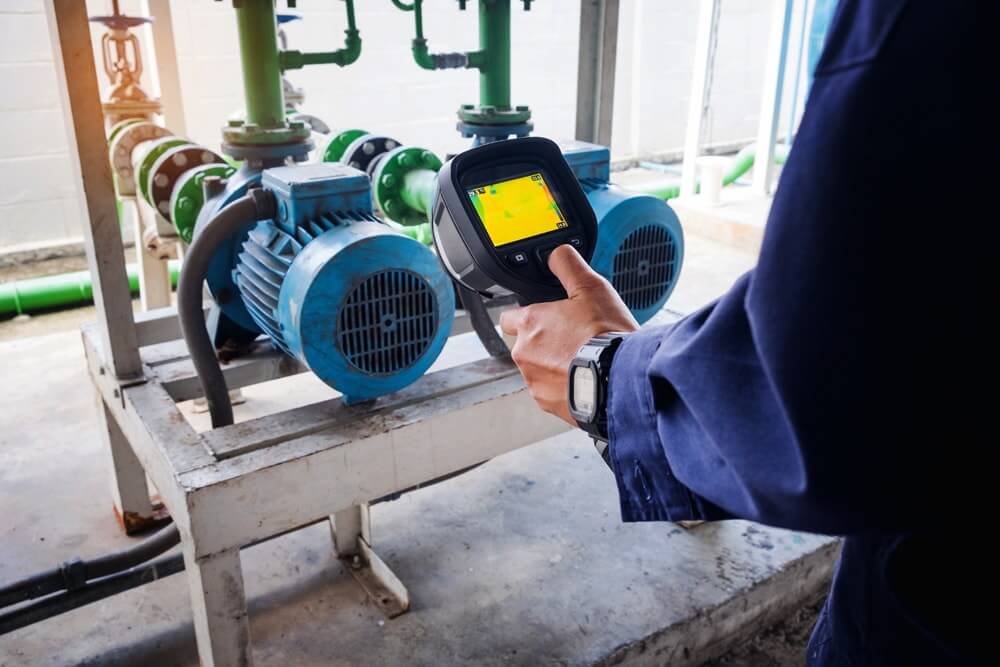Thermal Imaging: How to Use it to Protect Your Business from Electrical Faults
Posted on September 15, 2020 | by | Posted in Insurance

We’ve all heard that old adage, “prevention is better than cure”. And when it comes to protecting your business from electrical faults, it’s surely an adage worth paying attention to. Faulty electrical equipment is one of the leading causes of workplace fires in Australia and it can have a devastating impact on your business. From being unable to operate to potentially losing specialised equipment, minimising electrical faults is crucial to protecting your business from huge financial losses.
This is where thermal imaging comes in. In this article, we’ll discuss what thermal imaging is all about and how you can use it to prevent electrical faults inside your establishment.


Why use thermal imaging
Thermal imaging is one of the most cost-effective ways of managing electrical faults. It ensures there are no hidden faults underneath a switchboard, distribution board or any heat-emitting device for that matter. It could save a company from a whole lot of trouble, not to mention a whole lot of money as well. Over the years, the cost of thermal imaging has decreased significantly, making it even more accessible to businesses of all sizes. This can prove to be a huge difference-maker in terms of spotting an issue in advance or overlooking a serious problem that could come with catastrophic consequences.
By using thermal imaging in your switchboards and other pieces of electrical equipment, you can detect anomalies in the hot spots early on address them immediately before they turn into a major issue. When a piece of equipment fails, you face significant downtime along with the additional repair/replacement costs. If there are dangerous conditions within the switchboard, it could catch fire or induce or induce an electric shock to employees in close proximity, and that could otherwise be fatal.
How does thermal imaging work
Thermal imaging is conducted by an infra-red camera that scans electrical equipment and captures different levels of infrared light. This then tracks the heat emitted by the scanned equipment and detects its surface temperature.
A thermal imaging scan of the equipment is produced. These can identify areas of the equipment that are working properly, those that require careful monitoring, and those that require immediate maintenance.
The imaging scans can then be used as part of an agreed maintenance schedule. By identifying equipment and infrastructure that are at risk of electrical faults, it’s much easier to implement an improvement plan that’s safe, accurate, and timely.
Not only does thermal imaging mitigate business interruptions, but it also circumnavigates a whole host of other problems that could prove financially devastating if left unaddressed.
How often should you conduct thermal imaging?
How often a specific business needs thermal imaging depends on a number of factors such as the type of equipment used and the amount of load the system is under. Since each business is unique, there are no set of standards regarding the frequency of thermal imaging.
For example, in a regular office building, we suggest conducting thermal imaging scans every one to three years, taking into account the size of the building and the nature of the business. A manufacturing site, on the other hand, has much high power drain on the electrical systems, which makes thermal imaging necessary at least annually. If it’s a mining site, potentially every week if possible.
Ideally, you should be balancing the load you’re putting onto the system. It helps to know the equipment you’re using as well to limit the risk of something going completely haywire. This is especially important if you’re renting your business. For businesses that rent their premises, it’s a good idea to know where the responsibility for system maintenance and thermal imaging falls. While the building’s electrical system is usually the building owner’s responsibility, the load that’s placed on it (along with the equipment used) is mostly down to the tenant. If you’re unsure about this, make sure to clarify with your landlord.
In such an instance, it’s safe not to assume. If there’s not an agreement in place, there needs to be a conversation. Sometimes the tenant pays, sometimes the building owner, sometimes it’s split between the two.
Using thermal imaging for your business
Using thermal imaging requires experience and expertise. It’s wise to leave this to professionals that are well-versed in using a thermographic camera. These individuals know how to conduct, scan analysis and can recommend the ideal corrective action to limit potential electrical faults.
Commercial electrical contractors sometimes offer thermal imaging as an additional service – and if not, they should be able to recommend an accredited professional to their clients. Once you’ve found the right people to hire, the first thing you should do is acquire a baseline assessment. What this does is identify immediate problems and be a point of reference to compare future scans with. It can also provide significant comfort to you, as a business owner, that you’ve got full visibility on the electrical risk of your business.
Request a FREE Quote




